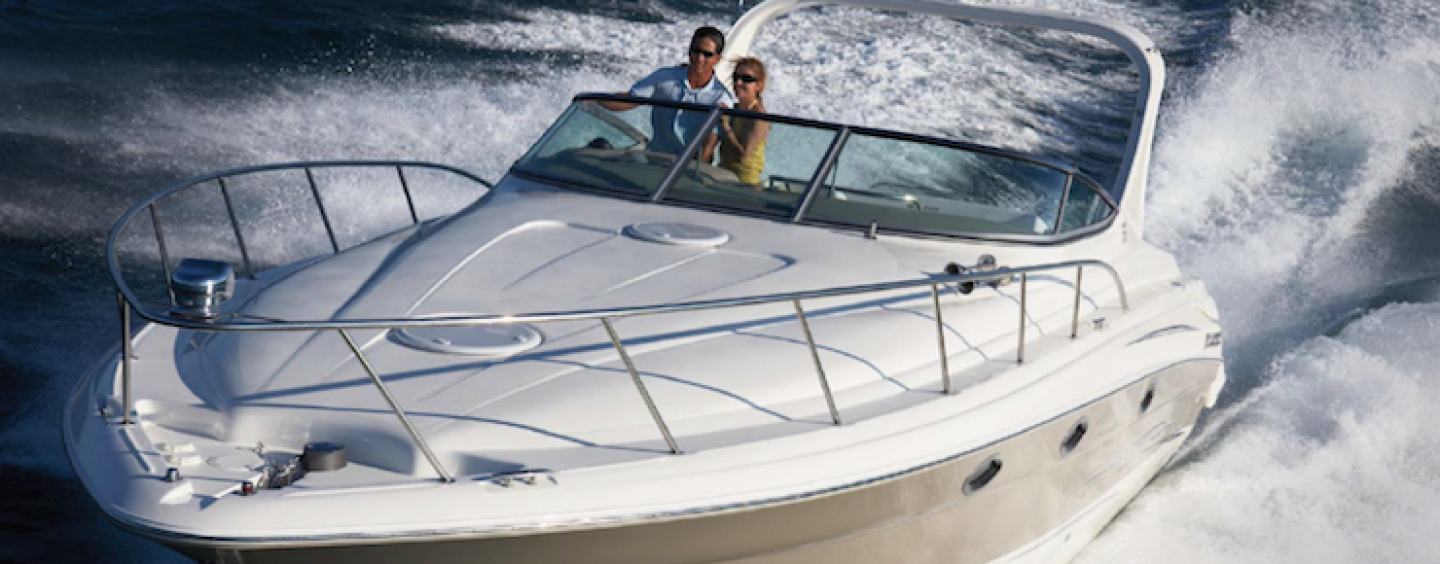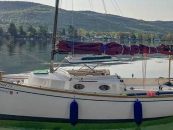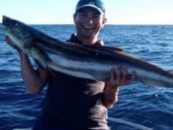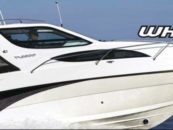Sports cruiser buyers will soon find out that buying a luxury watercraft is more complex than purchasing a new car. Numerous makes and models all seem as equally capable. In order to help you decide what model to purchase, Tim Stessl, a recognised boat-builder and sales manager on the Gold Coast, outlines the pros and cons of various types of sports cruisers. (With Andy Kancachian)
There is no such thing as the perfect sports cruiser. However, there can be one that is ideal for you. By analysing your needs, you will be able to help focus your search on the type of cruiser that will suit you.
First and foremost, do your research—whether in magazines or online forums, or other sources. Try talking to owners that have the same boat you are looking for and obtain feedback. The dealer you buy from is just as important as the boat you choose. For used boats, research as much history on the boat before you buy it, and spend on a pre-purchase inspection conducted by a qualified expert.
Size Matters
When selecting a sports cruiser, determine how many people are staying on board overnight. A basic estimation for boat length can be illustrated several ways. A family of four will need at least a 28-foot or a larger sports cruiser, with a traverse bunk for the kids and a forward bed for the parents. If to be used by only two adults, then any boat size with at least a double bunk/bed will work. The wider (beam) the sports cruiser, the more stable the vessel will be at rest and under way. A wide-beam cruiser offers more internal space. If the boat has a 20+-degree deep vee then you want to make sure that the boat is at least 2.8 metres wide. If the hull has a shallower vee, then a narrower hull is acceptable—but you lose a lot of internal space. The optimum beam is a minimum of 2.8 metres—but this size is not trailerable.
Recommended Features
- Hardtop vessels are longer-lasting and do not need replacing every 10 years. However, they do add extra cost to the boat. When looking at an under 40-foot cruiser with a hardtop, you will be limited by choice, as not every make and model is optioned with a hardtop. During summer. the hard top cruiser can become very hot and stuffy due to lack of ventilation. The most common choice in this size cruiser has a canvas top and removable clear screens and side, so you can open it up on hot days and seal the cabin during the colder winter months.
- A sports cruiser with a walk-through windscreen will allow easy access to the bow, and avoid having to traverse the narrow side.
- If you want to stay married, then an anchor winch is essential. No one enjoys manually pulling up an anchor when you are at sea to relax. In rough seas, falling overboard while trying to manually pull in your anchor can endanger your entire family. It is worth reiterating that an anchor winch is a must.
- If you have to moor a single engine cruiser in a small marina berth, then consider buying a cruiser with (or fitting) a bow thruster to make it easier to dock. For twin engine vessels, the bow thruster is not as critical. However, if you can afford it or the boat is already fitted with one, then that will make docking even easier.
- Also, ensure the inbuilt water tank capacity is sufficient for your needs, as those aboard will use approximately 20 litres per person per day for showers, brushing teeth, washing dishes, etc. Ideally, a model with transom hot and cold shower will keep the kids clean and the boat relatively sand-free.
- If the toilet is under the bed(s), check that it is removable (porta-potty style) so you can remove it before you get into the bed.
- The cabin will need ventilation during hot summer nights, and the hatches should be fitted with bug screens.
- The sports cruiser should be fitted with a decent battery storage for running 12-volt lighting and electrical. If you have children on board or intend to be away from shore for extended periods of time, invest in an inverter generator to charge computers, heat meals, run the TV, and power the stereo and lighting.
- In the cockpit, ideally, you will need a sink and tap, inbuilt cooler, a removable table, and plenty of seating/sun lounge. The cabin below preferably will need at least two beds, a toilet, a sink, storage for all the plates, cups and food and personal items.
- The transom should be fitted with a stainless steel rail with BBQ, which can be used for the bulk of the on-board cooking. In this way, it does not stink out the cabin and is much easy to clean. If there is additional space, install a fish-cutting board which can double as a preparation bench for the chef.
- A good boarding ladder is essential to get back on board after you have been for a swim. Make sure the duckboard is non-slip coated as it can get very slippery when wet.
Engine Choices
Check the manufacturer’s specifications and choose the maximum horsepower (HP) recommended to be fitted, as the boat will be heavily loaded up for extended stays. The larger engine will pay for itself, as a smaller motor will work too hard and burn more fuel than the maximum specified HP engine.
If the cruiser is less than 29 feet, a single large HP engine is sufficient, such as a 5.7- litre V8 with a bravo 3-leg. This is cheaper to run and you will only be servicing one engine and leg. For cruisers larger than 30 feet, nearly all brands fit twin engines to handle the size and weight of the boat.
A stern drive has a shallower draft than a shaft drive engine. So, on the Gold Coast, it is advisable to buy a stern drive to avoid touching bottom in our shallow sand-banked waterways. A stern drive will also allow you to reverse into a shallow beach anchorage, trimmed up the leg(s) and on most boats step off the duck board right onto the beach.
Running costs and maintenance
Simply put, the faster you go, the more fuel you will use. The ideal cruising speed is 22 to 25 knots in any size sports cruiser as this seems to ensure a comfortable ride and efficient fuel consumption. Most sports cruisers up to 29 feet with a single engine will burn around 40 litres an hour at this speed. The larger twin engine sports cruisers up to 32 feet will use twice as much, and beyond a 40-foot cruiser will require even more fuel.
If your sports cruiser will be wet-berthed on a pontoon at a marine or your home, the hull will require antifoul every few years at an average price of 3,000 dollars and upwards depending on the size of the boat and number of engines. The annual servicing will start at 1,000 dollars per engine for a very basic service. Make sure—before you pull the boat out of the water at the marina—you ask your mechanic for a quote and then authorise the specific work to be carried out.
New vs used
When buying a new boat, you have the privilege to choose the brand, size, colour and options you actually want. The vessel will be delivered with a factory warranty for at least three or more years, so there are no maintenance surprises.
When buying a used sports cruiser, you are limited by the available stock that is for sale and whatever features have already been fitted. Be patient and diligent enough to research the history of the vessel. A used boat purchase will be more risky but the savings are considerable.
Dealer is key
The boat dealership that supplies your sports cruiser—new or used—will play a vital role for your trouble-free boating. Ask the dealer about the aftersales service and understand the fee structures for service and maintenance. The dealer might also have a trade-in policy if you decide to upgrade in the future.
By asking for some referral customers, you can hear first hand other buyers’ experiences with the brand and model, and more importantly, the aftersales service provided by the dealer. Be sure to insist on a sea trial to ensure the sports cruiser will do everything you want it to do with regard to seating passengers, providing a comfortable ride, and vessel stability both at rest and while underway.






























